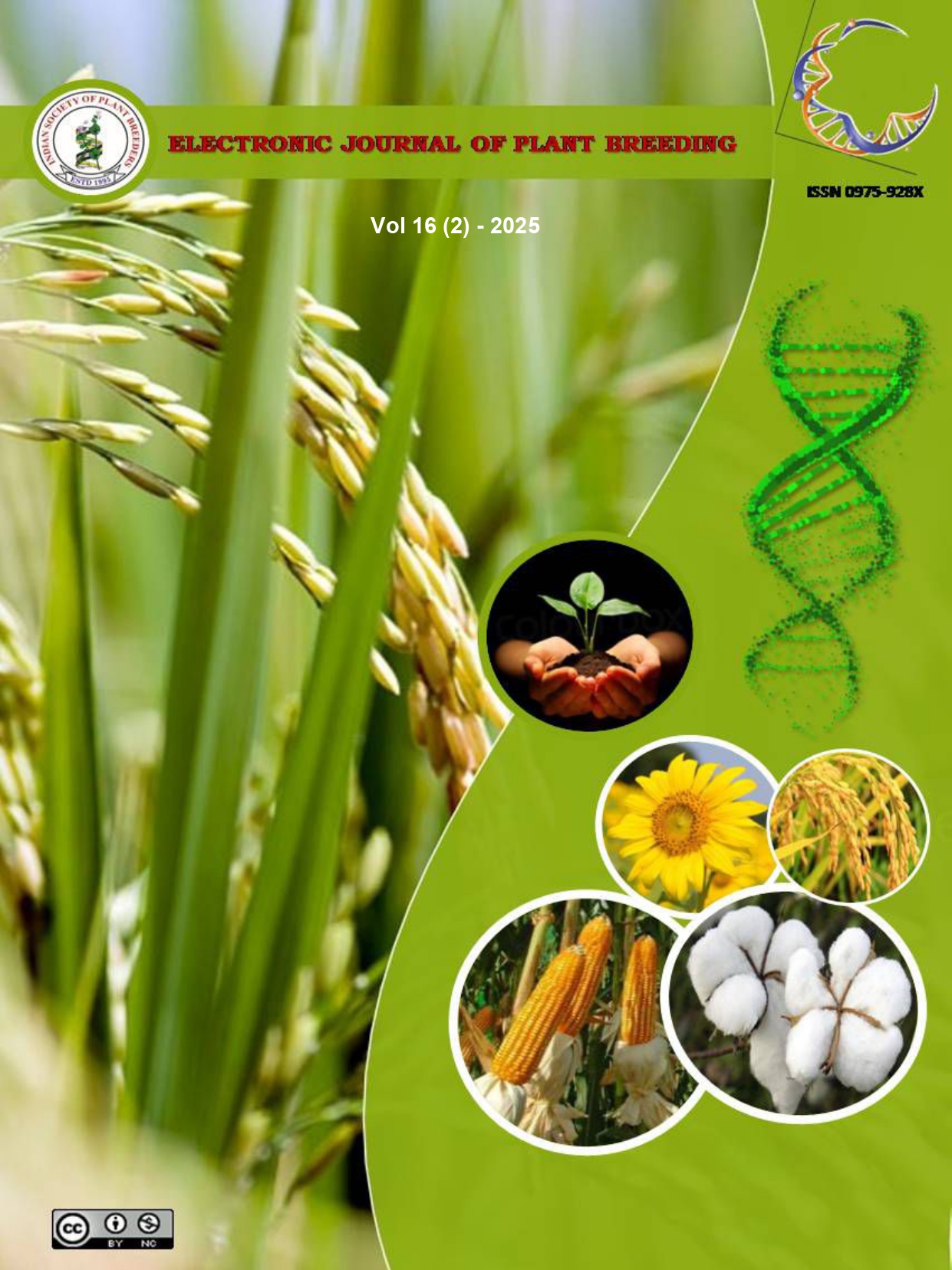Trait association and genetic diversity analysis in field pea (Pisum sativum var. arvense L.) under timely and late sown conditions
DOI: 10.37992/2025.1602.024
Abstract
One hundred and forty three genotypes of field pea including three check varieties were evaluated for morpho-physiological characters under timely and late sown conditions for the study of trait association and genetic diversity. Correlation analysis revealed that for timely and late sown conditions, seed yield per plant showed a strong positive correlation with effective pods per plant, biological yield per plant and plant height. In addition to the above traits, 100-seed weight and pollen viability also exhibited a significant and positive interrelationship with seed yield in late sown conditions. This relationship suggests that selection of more effective pods per plant, biological yield, plant height, 100-seed weight and pollen viability are desirable under late sown conditions to enhance the yield. These traits were also commonly correlated with each other in both environmental conditions. Path coefficient analysis revealed that in timely sown environment, effective pods per plant and biological yield per plant; and in late sown environment, effective pods per plant, biological yield per plant, 100-seed weight, plant height and pollen viability contributed to seed yield directly as well as indirectly. Consequently, it is essential to prioritize these traits when designing a selection strategy for developing high-yielding field pea cultivars. The D2 cluster analysis grouped 143 genotypes into 05 multi-genotypic clusters in both sowing conditions. Genotype distribution was different in different environments, suggesting that the environment has an influence on genotype performance.
Keywords: Field Pea, Correlation, Path coefficient, Cluster, Genetic diversity.
Trait association and genetic diversity analysis in field pea Pisum sativum var. arvense L. under timely and late sown conditions
. 2025. Electronic Journal of Plant Breeding, 16 2, 249-257. Retrieved from https://ejplantbreeding.org/index.php/EJPB/article/view/5267It is certified that:
- The corresponding author is fully responsible for any disputes arising due to the publication of his/her manuscript.
- The article has been seen by all the authors who are satisfied with its form and content.
- The sequence of names of authors in the by-line is as per their relative contribution to this experiment, giving due credit to all scientists who made notable contribution to it.
- All the authors fully understand that inclusion of any other co-authors or exclusion of any co-authors is not possible once the article has been submitted to the journal.
- The corresponding author takes full responsibility for this article.
- The address of the organization where the research was conducted is given.
- The article is exclusive for this journal, and the results reported here have not been sent (and will not be sent during its consideration by this journal) for publication in any other journal.
- Authors agree to abide by the objective comments of referees and do agree to modify the article into a short note as per the recommendation, for publication in the Electronic Journal of Plant Breeding.
- If published in Electronic Journal of Plant Breeding, the copyright of this article would vest with the Indian Society of Plant Breeders, who will have the right to enter into any agreement with any organization in India or abroad engaged in reprography, photocopying, storage and dissemination of information contained in it, and neither we nor our legal heirs will have any claims on royalty.



